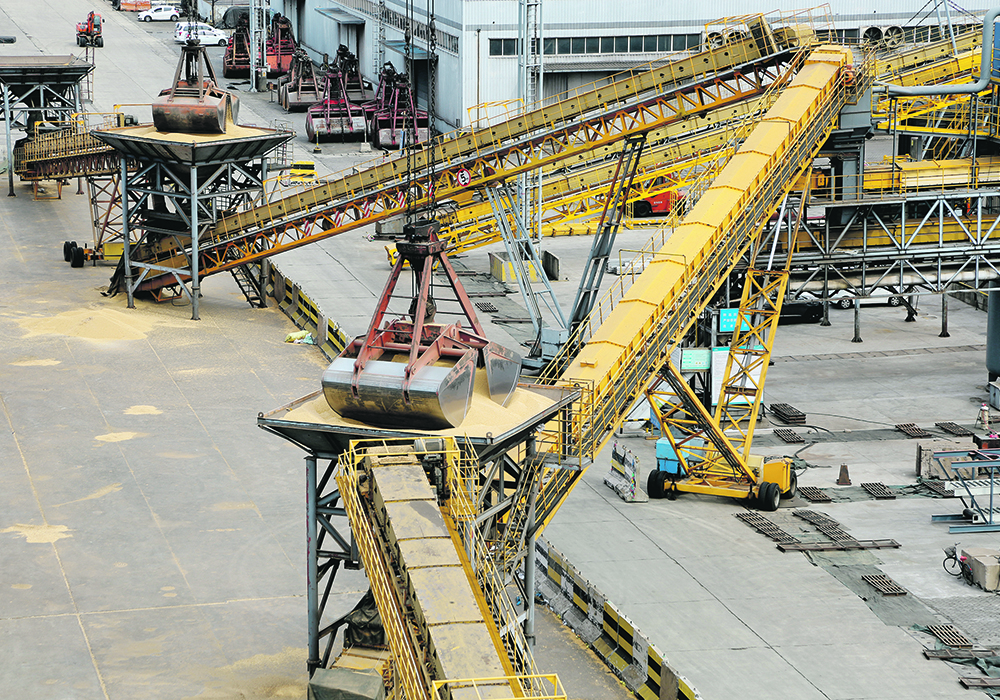China typically accounts for about 60 percent of world soybean imports, but an analyst says that is about to change
Global soybean demand is starting to plateau and will be heading down in the years to come, according to a senior official with one of Japan’s largest banks.
Improving feed conversion rates, an aging population and the rising popularity of plant-based meat alternatives do not bode well for the future of soybean meal consumption, said Jean-Yves Chow, senior vice-president of food and beverage for Mizuho Bank Ltd.
“The decade of proteins we just had will be very different going forward,” he said during a webinar organized by Global Grain.
Read Also

Critical growing season is ahead for soybeans
What the weather turns out to be in the United States is going to have a significant impact on Canadian producers’ prices
African swine fever will be a turning point for narrowing the protein gap in Asia and that means reduced global soybean demand.
China typically accounts for about 60 percent of world soybean imports.
African swine fever has caused a shift from pork to poultry consumption in China and Vietnam and some of that demand won’t return to pork even after the sector recovers from the devastating disease.
The problem is that while it takes about three kilograms of feed to produce one kilogram of pork, it only takes 1.8 kilograms of feed to make one kilogram of poultry.
“If you switch your meat consumption from pork to poultry you more or less divide your feed consumption in half,” said Chow.
“This is one of the key factors changing the equation on feed demand.”
The good news is that backyard hog farmers in China are being phased out of the industry due to disease pressure. Commercial operations tend to use more soymeal in their rations.
However, commercial operations in China are rapidly improving their feed conversion rates (FCR).
Five years ago they needed 3.2 kilograms of feed to produce one kilogram of pork but today the conversion rate is closer to 2.5.
“This is a huge improvement and this improvement is offsetting all the extra demand in meat,” said Chow.
“This is (having) a huge impact on the soy complex.”
There has also been some shift in pork to fish consumption in China and the FCR for fish is even lower than poultry at 1.2 kilograms of feed per kilogram of meat.
Soybean demand has soared over the last decade due to a pronounced and growing protein deficit in Asia.
Chow estimates the gap was 135 million tonnes in 2018 comprised of both meal and meat. Chow came to that number by calculating the soybean meal equivalent of imported soybeans, soy meal, distiller’s grains, fish meal, pork, chicken and beef.
The vast majority of growth over the past decade has been in meal products but that has started to plateau.
COVID-19 may exacerbate the problem as Asian superpowers like China become more protectionist and strive for self-sufficiency in pork production.
Chow said one of the biggest long-term concerns for the meat and feed sectors is the aging population in key markets.
In Asia, nine percent of the population is 65-years or older. That will jump to 28 percent by 2100, led by markets like South Korea, Japan and Singapore.
“Your consumer behavior will be very different,” he said.
Older people eat less meat.
A more immediate challenge is the rise in popularity of plant-based meat alternatives. Sales of meatless meat products are growing at a clip of about six to seven percent annually, which is double the growth rate of traditional meat products.
Alternative meat products such as tofu and tempeh have been popular in Asia for decades.
The rise in popularity of such products is going to hurt soymeal sales but so will alternative feed ingredients such as insects, algae and single cell protein.
“The Asia protein gap is closing up and it may be closing up faster than we think,” said Chow.


















